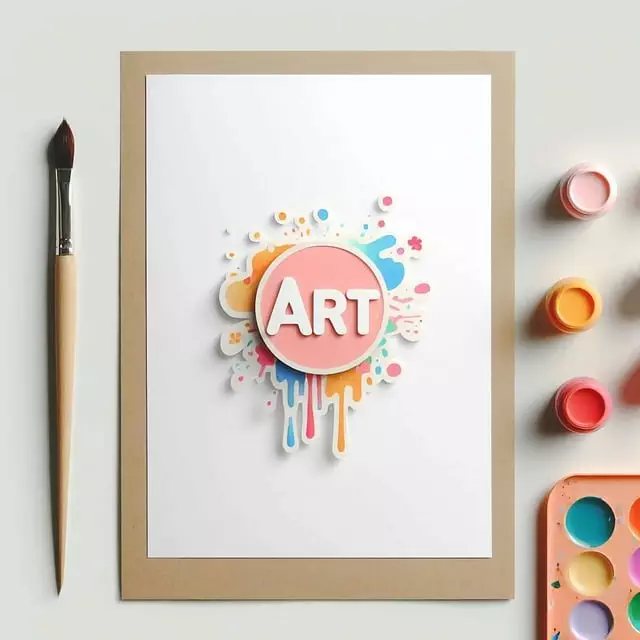Typography is an art form that transcends mere text display; it’s a pivotal element in design that shapes reader experience and brand identity. In this comprehensive guide, we delve into the intricacies of typography through the lens of a New Jersey Graphic Designer, whose expertise illuminates the core principles essential for effective visual communication. From the nuances of Serif versus Sans-Serif typefaces to the latest trends influencing modern branding and marketing strategies, this article offers a deep dive into the world of typography. We’ll also explore how a New Jersey Graphic Designer approaches typography projects, providing a case study that showcases the depth and breadth of graphic design services with a focus on typography. Join us as we unravel the essence of typography in design, ensuring your message is not just seen but felt.
- Understanding the Essence of Typography in Design
- The Role of a New Jersey Graphic Designer in Typography Excellence
- Core Principles of Effective Typography for Visual Communication
- Anatomy of Typefaces: Serif vs. Sans-Serif and Beyond
- Typography Trends Shaping Modern Branding and Marketing
- Case Study: A New Jersey Graphic Designer's Approach to Typography Projects
- Exploring the Range of Graphic Design Services with a Focus on Typography
Understanding the Essence of Typography in Design

Typography is an indispensable element in the realm of design, serving as a pivotal tool for communication and brand identity. A New Jersey Graphic Designer will attest to its significance in conveying the intended message effectively and creating visual harmony within a design. The choice of typefaces, font sizes, spacing, and colors can significantly influence how content is perceived and interpreted by the audience. Good typography enhances readability, making complex information more accessible and engaging. It’s not merely about selecting aesthetically pleasing fonts; it’s about understanding the psychology behind text rendering, the dynamics of layout design, and the impact of type on brand perception.
In the context of a comprehensive graphic design strategy, typography complements other visual elements to create a cohesive and impactful design narrative. A Graphic Designer in New Jersey, for instance, might employ typography to draw attention to key information or to establish a certain mood through their graphic design services. The balance between text and image is crucial, as it dictates the overall flow and hierarchy of a design. Effective typography ensures that the design’s purpose is fulfilled, whether it’s to inform, persuade, or entertain, thereby underscoring its role as a fundamental component in the successful execution of any design project.
The Role of a New Jersey Graphic Designer in Typography Excellence

In the realm of visual communication, a New Jersey Graphic Designer plays an integral role in elevating typography to new heights of excellence. These professionals are not merely artists of the written word; they are architects of legibility and aesthetics, crafting type that speaks volumes without uttering a sound. Their expertise lies in understanding the nuances of font selection, size, spacing, and alignment, all of which contribute to creating a cohesive and impactful visual experience. A New Jersey Graphic Designer’s skill set extends beyond mere design; it encompasses an intricate knowledge of human psychology, cultural context, and brand identity, ensuring that each typographic choice communicates the intended message effectively.
The graphic design services offered by a New Jersey Graphic Designer are multifaceted, catering to a diverse array of clients and projects. From logotypes to body text in websites or printed materials, their work is seen across various mediums, each presenting unique challenges. These designers employ a blend of creativity, technical acumen, and critical thinking to address the demands of both client and audience. They stay abreast of the latest typographic trends while maintaining a deep respect for the foundational principles that govern good design. This dual focus on innovation and tradition positions them at the forefront of typography design, ensuring that each project not only meets but exceeds expectations, delivering typographic solutions that are as functional as they are beautiful.
Core Principles of Effective Typography for Visual Communication

Typography is a fundamental aspect of visual communication that transcends mere text representation; it’s a visual art form that, when executed by a skilled New Jersey Graphic Designer, can elevate design to new heights. The core principles of effective typography revolve around legibility, hierarchy, rhythm, and balance. A proficient Graphic Designer understands that the choice of typeface, font size, and spacing directly influences how content is absorbed and interpreted by the audience. Legibility is paramount; typefaces must be clear and readable across various mediums to ensure that the message is conveyed effectively. Hierarchy organizes content in a way that guides the reader’s eye through the material in an intended order, from headings to body text, creating a visual journey that enhances comprehension.
Rhythm, or the repetition and progression of typographic elements, adds a harmonious flow to the design, which can be achieved through consistent line lengths, type sizes, and spacing. Balance ensures that all elements of typography work together cohesively, creating harmony and visual appeal. A New Jersey Graphic Designer employs these principles to craft designs that not only align with brand identity but also resonate with the target audience. Graphic Design Services that excel in typography design are instrumental in delivering compelling narratives through clean, engaging, and reader-friendly content. By meticulously applying these core principles, a designer can create powerful visual communications that capture attention, convey information effectively, and leave a lasting impression.
Anatomy of Typefaces: Serif vs. Sans-Serif and Beyond

Typography plays a pivotal role in shaping the visual narrative of any design piece. For a New Jersey Graphic Designer, understanding the nuances between typefaces is as essential as the tools of their trade. At the core of typographic choices lies the anatomy of typefaces, which can be broadly categorized into serif and sans-serif styles, with each serving distinct purposes.
Serif typefaces are characterized by small projecting features at the end of strokes; these can be seen as the ‘feet’ or ‘tails’ at the terminals of letters. The classic serifs like Times New Roman and Garamond have been the backbone of traditional print media for centuries, offering a sense of formality and readability in longer texts, a factor that has made them a staple in the toolkit of experienced graphic designers. Conversely, sans-serif typefaces lack these features, presenting a cleaner, more modern aesthetic. Helvetica and Arial are quintessential examples of this category, often used for their legibility and simplicity, which makes them highly adaptable across various digital platforms. Beyond the binary serif vs. sans-serif classification, there are myriad subcategories such as slab-serif, script, decorative, and monospaced typefaces that a New Jersey Graphic Designer might explore to meet specific design requirements. Each typeface carries its own voice and personality, which can be harnessed by graphic designers to convey the intended message or mood effectively. In the realm of graphic design services, the selection of an appropriate typeface is a skill honed through experience and a deep understanding of typographic principles. It’s through this lens that a New Jersey Graphic Designer approaches each project with intention and precision, ensuring that every element of the design contributes to the overall communication strategy.
Typography Trends Shaping Modern Branding and Marketing

Case Study: A New Jersey Graphic Designer's Approach to Typography Projects

Exploring the Range of Graphic Design Services with a Focus on Typography

Typography serves as the cornerstone of visual communication in graphic design, playing a pivotal role in conveying messages and evoking emotions through text. A New Jersey Graphic Designer understands this deeply and employs a comprehensive range of typographic styles and techniques to craft compelling visual narratives. From selecting the perfect font to arranging type hierarchies that guide the viewer’s eye, these professionals offer specialized graphic design services that transcend mere text display. Their expertise encompasses everything from the subtle nuances of typeface selection to the strategic application of typography across various media, ensuring legibility and impact in both digital and print formats.
In the realm of graphic design services, a New Jersey Graphic Designer’s skill set extends beyond the confines of traditional typography. They are adept at integrating innovative typefaces into modern design contexts, harmonizing text with imagery to create cohesive and engaging compositions. Their creative process involves a deep analysis of brand identity requirements, audience demographics, and the desired emotional response from the target viewers. This informed approach allows them to tailor typographic solutions that resonate with audiences, elevating brand presence and fostering memorable user experiences. Whether it’s for a local startup or an established corporation, their graphic design services in typography are indispensable for projects aiming to stand out in a crowded marketplace.


